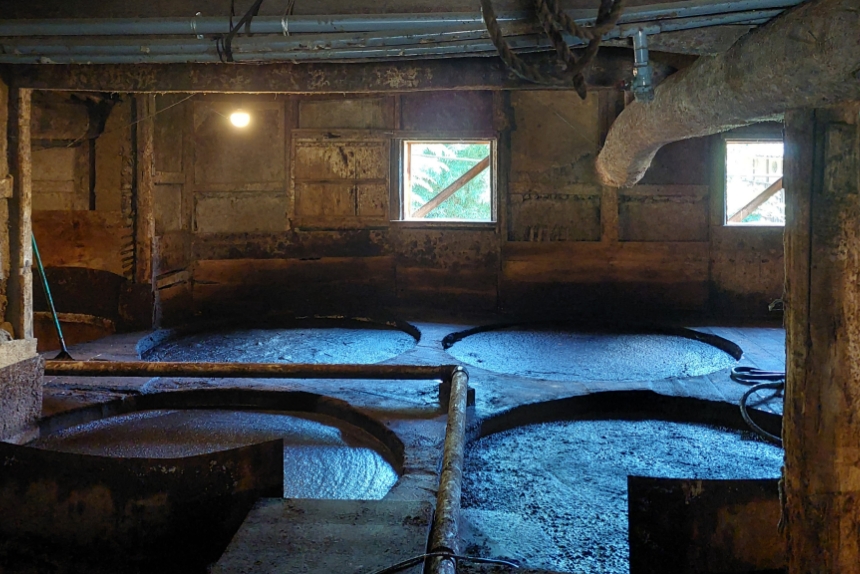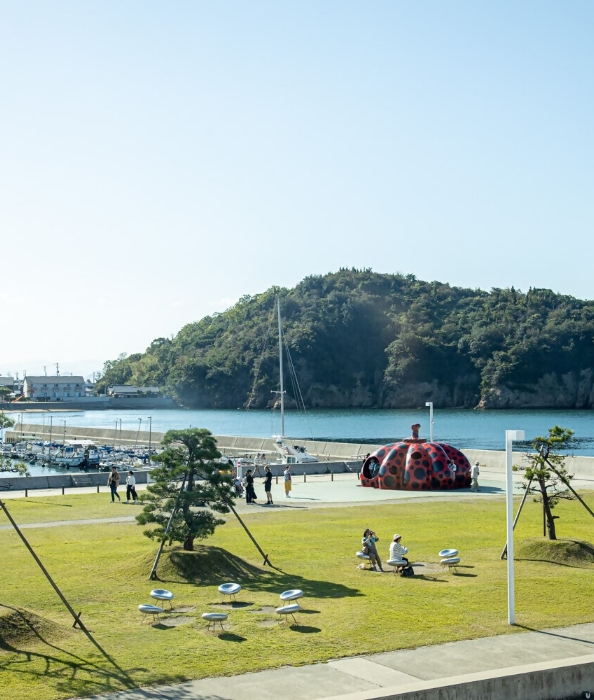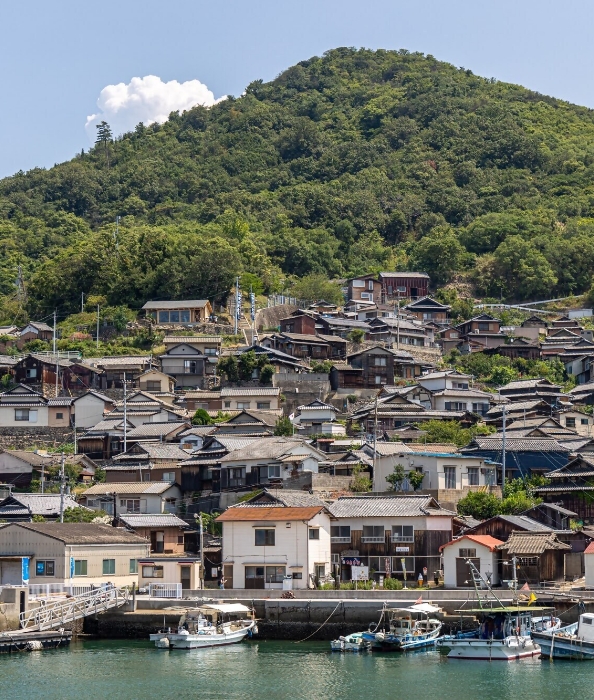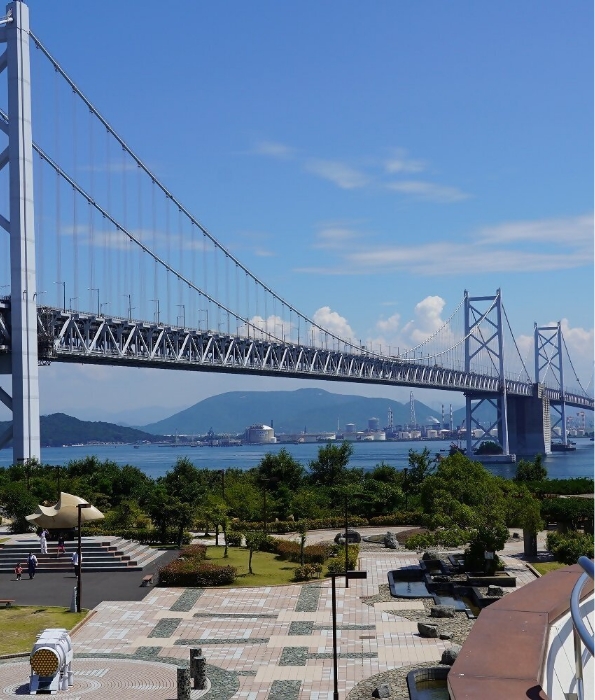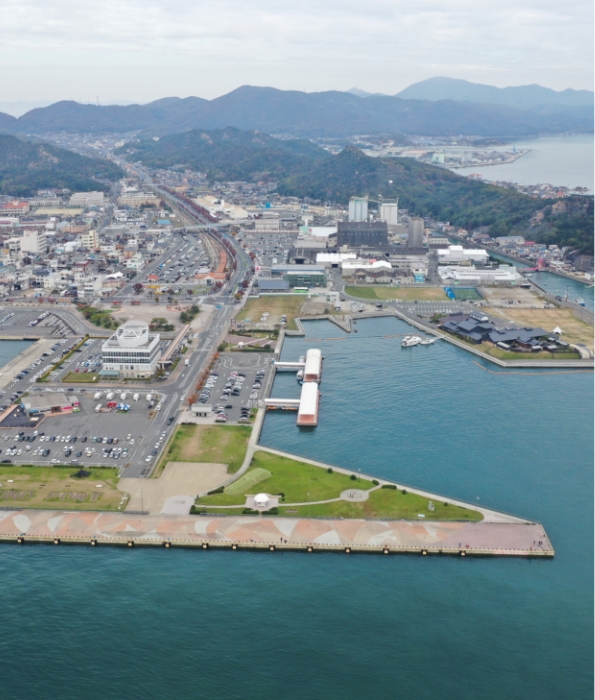Islands and Venues

Shodoshima
One of the Setouchi region’s best-known tourist destinations and the largest island participating in the Triennale.
Shodoshima is the largest of all the Triennale venues, with an area of 153.26 km² and a circumference of 140.1 km. It is the second largest island in the Seto Inland Sea, the first being Awajishima. It has two towns, Tonosho and Shodoshima, and a population of about 26,000.
The island has many iconic sights, including a majestic gorge, terraced rice fields, and sunset viewing spots, and has also been used as a movie location. Local people keep alive such traditions as rural kabuki and mushiokuri, a pest expelling ritual.
Known as Olive Island, Shodoshima was the first place in Japan to successfully cultivate olives. Its rich array of local specialties also includes somen noodles, soy sauce cured in wooden vats, and stone materials.

Magnificent Natural Environment and Culture
Kankakei is one of Japan’s top three gorges, while the sunset view from Yakatazaki Yuhi no Oka made Japan’s top 100 sunset view selection. The beautiful scenery has been used as a setting for such movies as Twenty-Four Eyes and Rebirth. In the Nakayama Senmaida terraced fields, where Taiwanese artist Wang Wen Chih has created an enormous bamboo structure every Triennale, the traditional local culture and customs remain strong and vibrant, including rural kabuki and the pest-expelling ritual known as mushiokuri, both of which are offered as prayers for a bountiful harvest.

Birthplace of Olive Cultivation in Japan
About 115 years ago, Shodoshima became the first location in Japan to successfully cultivate olives, earning it the nickname Olive Island. In addition to high grade olive oil, the thriving local olive industry produces cosmetics and skin care products, pickled olives and olive-related foods. Olive lees, which are high in healthy oleic acid, are fed to cattle to produce prized Olive Wagyu, a flavorful and tender type of beef.

Food and Industry
Shodoshima is one of Japan’s top three somen noodle production areas. It also produces Japan’s top sesame oil brand and is well known for its tsukudani, a condiment made from seafood, meat or seaweed simmered in soy sauce. Stone has been quarried on the island since ancient times, and Shodoshima supplied many stones for the walls of Osaka Castle in the 16th century. Soy sauce is rarely brewed in wooden vats anymore, but some breweries in Kagawa, including Shodoshima, carry on this tradition. The production process has been designated a national intangible folk culture asset.
